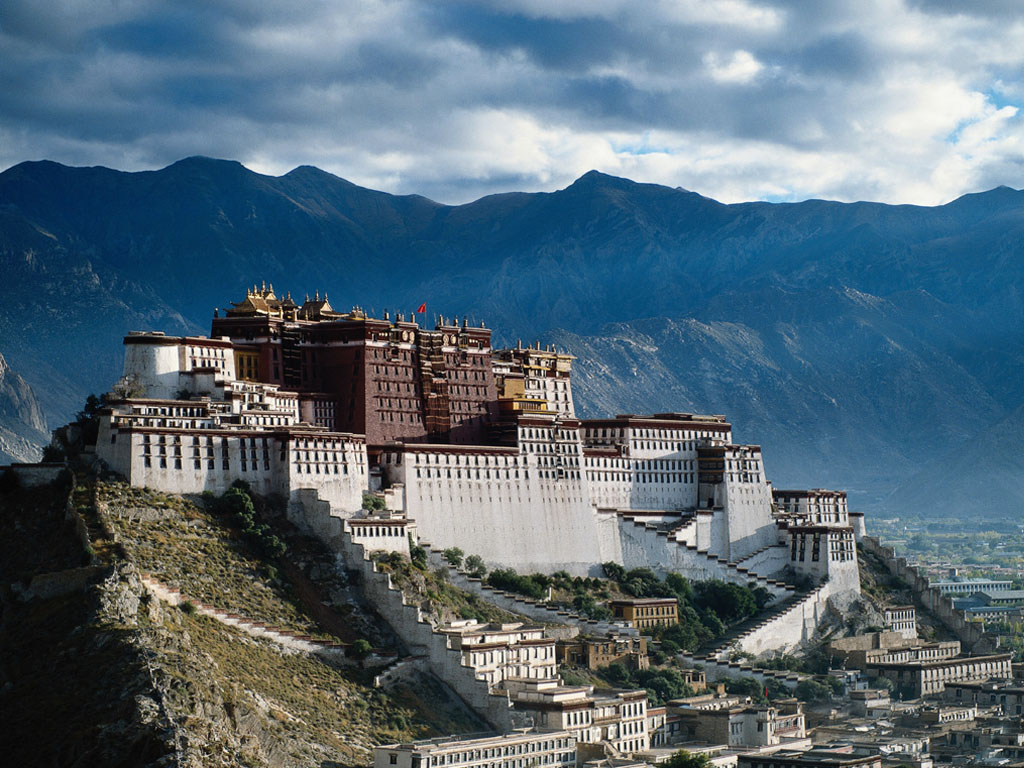Tibet Trip



Tibet and Chengdu(Panda base and Leshan Buddha)
Tour date: Late June or Early July
Chengdu, the capital of Sichuan Province and also the window city of Tibet. Buses transport visitors to the Grand Buddha at Leshan, included in the UNESCO World Heritage list. After that trip, then fly to Tibet.
The climate is mild in July, temperatures averaging in the upper 60’s, low 70’s in Tibet.
the
local handicrafts sold in the noisy, colorful bazaars are perhaps the
best material souvenirs of your visit. They offer rugs, yak leather
boots, wooden bowls, and ornamental cutlery and jewelry, be sure if
purchasing antiques, they have the proper Chinese stamp.
To get the travel permits:
All
kinds of people can get Tibet permit through a travel agency except
diplomats, journalists, and senior government officials who should
travel to Tibet under the arrangement by the Foreign Affairs Office of
Tibet Government.
To get the Tibet travel permit you need hold a
valid passport with valid Chinese visa and should submit the following
information by fax / email at least 15 days prior to arrival in Tibet:
Full name, Gender, Date of birth, Passport number, Nationality,
Occupation . If you are coming to Lhasa from Kathmandu, you'd better get
China visa from Kathmandu because no matter you've already got the visa
in your country or not, you must get a visa in Kathmandu, which is
regulated in an official memo between China and Nepal.
Altitude Sickness:
As
most of the places in Tibet lie over 3500m, most visitors are likely to
experience some minor to symptoms and discomfort of altitude sickness
(headache, mild nausea, loss of appetite, trouble sleeping )until their
body is adjusted to the elevation. This will generally disappear through
acclimatization in several hours to several days. They should take it
little easy first couple of days and drink plenty of non-alcoholic
liquids, eat light, high-carbohydrate meals for more energy, this help
the body to acclimatize faster
Day 1:Arrive in Chengdu from your home cities
Depart for Chengdu from home cities. Enjoy the famous "face changing" show. Overnight in chengdu
Day2: Chengdu to Leshan
Bus to Leshan. Visit the Leshan Grand Buddha on the river. Visit the Giant Panda Base in Chengdu. Overnight in Chengdu (4*)
Day 3: Fly to Lhasa from Chengdu
Board
a morning flight to Gonger Airport. High on a plateau between two
Himalayan ridges, Tibet covers an area as large as Western Europe. Your
first view of Tibet as the aircraft passes over spectacular mountain
ranges and sweeps down into beautiful valleys will be the first of many
unforgettable images of this remarkable region of the world. Tibet is a
rich land with an average altitude over 4000m(3,120ft) above sea level.
Over two million people inhabit this land of ancient cultures. people
living on the Tibetan plateau have their own ways of marriage, burial,
and other ceremonies. The balance of the day is free to relax and adjust
to the high altitude. You may also take pictures of the Potala Palace
during the sun setting time.
Overnight in Lhasa
Day 4:Lhasa
Tibet
is traditionally a spiritual place where buddhism infuses all aspects
of life, as it has for thirteen centuries the people in China` s Tibet
have devoutly worshipped Tibetan Buddhism for more than 1, 300 years. We
see this influence today at the 17th century Potala Palace. built on
the sides of the red hill, rising more than 1,000 feet above the valley
floor, this immense architectural wonder was once the residence of the
Dalai Lama. the Potala Palace consists of two palaces the Red Palace and
the White Palace, resembling a magnificent castle in the heaven. It is
now a state museum with more than 1,000 rooms housing 2,000 precious
Buddha images.
Jokhang Temple is an intriguing complex of chapels,
courtyards and sacred buddhist art that attracts pilgrims day and night.
Surrounding Jokhang is Barkhor a plaza lined with chanting monks,
street performers, and vendors selling carpets, hats, prayer shawls,
jewelry, and yak sculls.
Located in the heart of the old city,
Jokhang Temple dates back to the 7th century and is the holiest place in
Tibet as well as the spiritual center of the country .One story tells
that in ancient times. before Buddhism had established itself in Tibet,
there was a lake where the temple now stands. Tibet itself was
considered to be an enormous demon, and the lake was its heart. The
Buddhists decided to use the direct approach against the demon and to
subjugate it, drained the lake and built the temple on it. Its
architectural mixes of Tibetan, Indian, Nepalese, and Chinese styles
will still fascinate you.
Notice the outgoing Tibetan people. the
elaborate headdresses and bright, showy jewelry women wear belie their
otherwise austere existence. The Drepung Monastery, once the largest
cloister in the world, still houses a community of monks. It once was
the sprawling home to 10,000 yellow hat monks. most of the buildings are
decorated in the maroon and white motif common to Tibetan religious
architecture. There is a richness of gold decoration on the rooftops.
Overnight in Lhasa
Day 5: Lhasa to Shigaze
Visit
the the Yangzhuoyong Holy Lake on the way to Shigaze, you will admire
the beautiful sceneries on the way . Overnight in Shigaze
Day 6 :Shigaze to Lhasa.
Tashilhunpo
Monastery, founded in 1447, was once inhabited by over 4,000 monks.
Today,only600 remain there. This monastery is one of the few that
weathered the stormy seas of the cultural revolution relatively
unscathed. It is the home of the Yellow-Hat-Panchen Lamas and one of the
most beautiful remaining ensembles of Tibetan architecture. The grand
hall contains the tomb(containing more than 85kg gold lots of jewels )
of the 4th Panchen Lama. Explore the ruins of old fort Shigaze
Day 7 : Fly back to home cities
Lhasa to Chengdu and then from Chengdu to home cities by air. The end of the trip.


